Spud Papers – Egypt
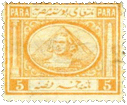 1867. Pyramid and Phinx. 5 Paras, yellow.
1867. Pyramid and Phinx. 5 Paras, yellow.
Genuine
There is a scarcely-perceptible break between the column and capital of the pillar. Places holding numerals oblong, and extending considerably beyond the vertical lines above.
Forged
Egyptian lettering reading 5 Piastres, instead of Paras. A wide break between the capital and column of Pompey’s pillar. The squares with numerals not extending farther than in a line with the white vertical stroke dividing the side devices from the center. The colour is always too reddish.
The Egyptian inscriptions of value upon both of these are correct, as is also the shape of the squares with numeral. The other details are as in the the previously-noted forgeries; but the colour in which the first-named is printed, is nearer to that of the genuine.
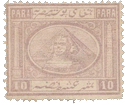 10 Paras.
10 Paras.
Genuine
The sphinx’s head does not go against the line of pyramid. Very slight division in the pillar; and the central lettering in lower label touches the frame. The 0 in right-hand corner is thin and elongated, that on the left being the thickest.
Forged
Head of sphinx touching the line of pyramid on left-hand side. Pompey’s pillar divided as in the 5 paras. The center of lower inscription does not touch the frame, and the thickest o is the one in right-hand angle.
 20 Paras, green.
20 Paras, green.
Forged
This forgery partakes of the usual peculiarity of the pillar, and is of equal execution with its fellows. As each value of the originals is printed in blocks of four slightly different dies, it makes it the more difficult to give a good test for the counterfeits; but the easiest and safest course is to look upon their backs, and if the impressed star and crescent is missing, then they may be safely relegated to the “verminbook,” or into the fire.
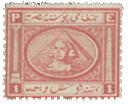 1 Piastre, red.
1 Piastre, red.
As there is more than one type of the original, it is very difficult to describe Spiro’s well-executed counterfeit. The following is the chief noticeable distinction.
In the genuine, the white line to the left of the upper and lower right-hand angles is always exactly vertical to the stroke at the side of Cleopatra’s needle; in the imitation, the lines by each of the referred-to squares are perceptibly nearer to the side of the stamps than is the longer line.
The colours in which the shams are printed is much too orange.
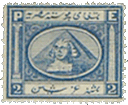 2 Piastres, blue.
2 Piastres, blue.
Genuine
The sphinx’s head touches the line of pyramid on the left side, but not on the right. The whole of the pillar is well-formed, and the “needle” touches the top of frame.
Forged
The head of sphinx touches both the front lines of pyramid, and the whole head is wide and much blurred. The capital of the pillar is shapeless, and upon one side. The remarks concerning the corner squares in the 1 Piastre will apply to this.
 5 Piastres, brown.
5 Piastres, brown.
Genuine
Very small head (comparatively), small numbered angles as in forged 5 Paras. All the genuine stamps have a star over crescent pressed upon the reverse after the paper is made.
Forged
Egyptian inscription reading 5 Paras instead of Piastres. It may be noticed here that the forger very stupidly reversed the due order in the two “5” stamps. Head of sphinx large, and extended fully across face of pyramid. Corners containing numerals, oblong, as in genuine 5 Paras.
The Egyptian inscriptions of value upon both of these are correct, as is also the shape of the squares with numeral. The other details are as in the the previously-noted forgeries; but the colour in which the first-named is printed, is nearer to that of the genuine.
 1872. 5 Piastres, Green.
1872. 5 Piastres, Green.
Genuine
Engraved in épargne, on thick, rough, yellowish paper, perf, 12 1/2, watermarked with crescent and star. All four crescents curved alike, and the top left-hand star is of a perfectly regular shape. The upper tail of each 5 in the right of the stamp almost touches the top outline of the containing oblong. The sphinx has two distinct dabs of shading under her right eye; and her right ear seems to be stuck on all on one side as it were. The outline of the pyramid, on the right-hand side of the stamp, is not perfectly straight, but is very slightly undulating; and the dark-shaded side of the said pyramid roughly represents courses of masonry. The central design does not touch the containing oval, but leaves a space, of equal width, all round it, which shows as a broad white line.
Forged
Lithographed, on thinnish perfectly white paper, pin-pricked 13, rather well done, no watermark. The right bottom crescent is not curved nearly so much as the others; and the top left-hand star is shamefully drawn. None of the upper tails of the 5’s come near to the top outline of their containing oblongs. There is only one long blotch of shading under the right eye of the sphinx; but her right ear is correctly drawn, better than in the genuine. The outline of the pyramid on the right-hand side of the stamp is quite straight; and the dark-shaded side is simply shaded with horizontal, crossed by oblique lines. The central design encroaches too much upon the broad white line above the pyramid, and also below the right shoulder of the sphinx. This, like the last, is a tolerably successful forgery; but the paper is very different, and the absence of watermark will, of course, show its worthlessness at once.
From “The Spud Papers” by Atless, Pemberton & Earée, 1871-1881.
 See also
See also


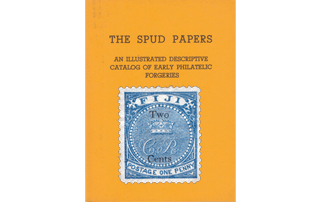
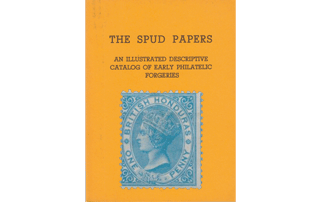
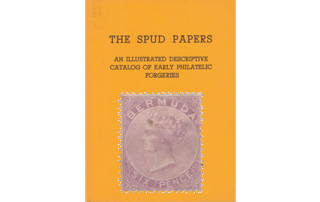
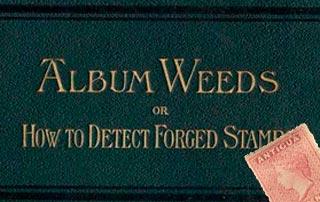
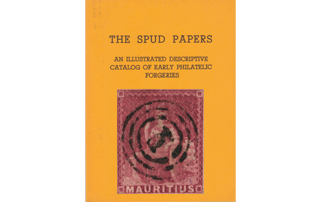
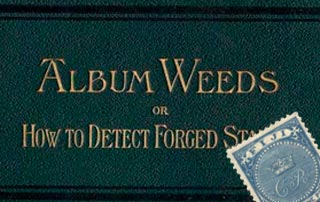
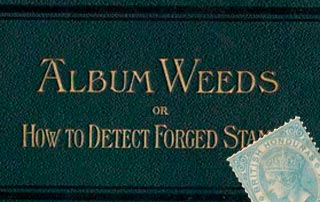
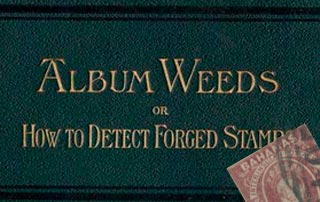
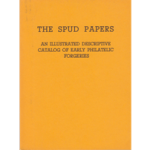
Leave a Reply
Want to join the discussion?Feel free to contribute!